Leopard geckos are truly one of my favorite reptiles at the moment. My first reptile was also a leopard gecko, so I guess that’s where it stems from. Leopard geckos have such fun personalities and honestly are not the most expensive or intense reptile that you can keep. When working, I normally recommend either the leopard geckos or crested geckos as a starter reptile. Now, let’s get into the care.
The main thing to note is that the husbandry of any animal, including reptiles, changes and improves over time. For many years, it was a common belief that leopard geckos were perfectly fine in a 20-gallon-long enclosure with a few places to hide out and a UTH (under tank heater). This has been debunked and we’ll need a bit more stuff, plus a larger enclosure.
Tank Size
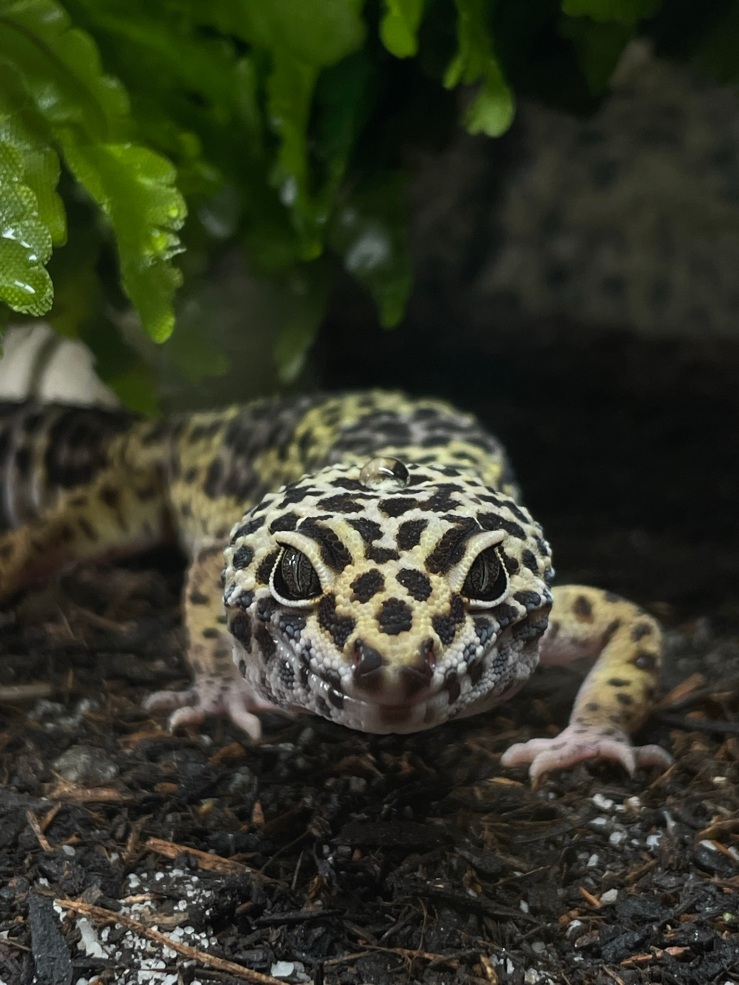
The new standard minimum for leopard geckos is a 40-gallon tank (or larger), or a 36x18x18. An important thing to keep in mind with any reptile is that they are ectothermic, meaning that they cannot regulate body heat internally like mammals can. They need an outside heat source in order to keep their bodies warm. However, no one wants to be warm all of the time. They need something called a heat gradient in their enclosure so they can manually move around in order to adjust their body temperature. An enclosure that’s far too small, such as a 10-gallon tank, would mean that it’s relatively the same heat all over the tank and the reptile would not be able to move about in order to cool themselves off properly. For leopard geckos specifically, the hot side of the tank needs to be between 86-95F (30-35C) while the cool side needs to be between 70-77F (22-25C). In a tank smaller than a 40-gallon, it’s essentially impossible to achieve these temperatures on both sides of the tank.
The enclosure for a leopard gecko is typically a glass tank with a metal mesh lid on the top. Most chain pet stores have reptile-specific glass tanks with front-opening doors (trust me, you want the front-opening doors). Plastic enclosures will start to melt and warp with heat, releasing fumes that are toxic to leopard geckos and humans alike. Another alternative, however, is PVC enclosures but they are much more costly.
Heating and Lighting
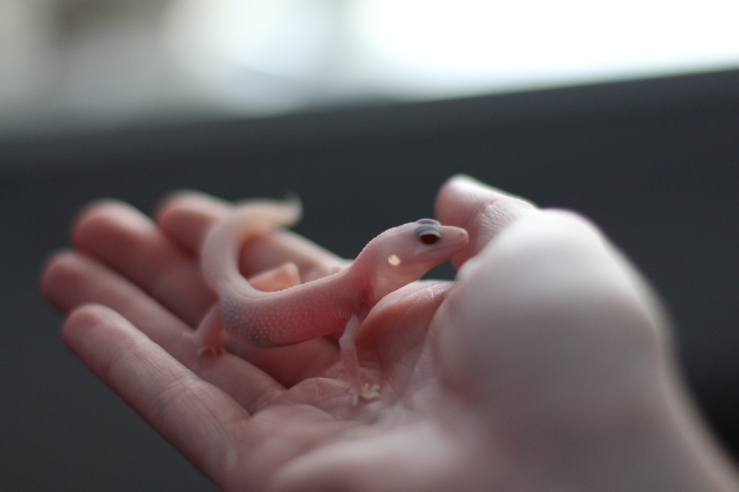
Leopard geckos are cold-blooded critters, as previously mentioned, so they need heat. UTHs can be used, but are not the best choice of heat source for leopard geckos. When using the appropriate substrate, a UTH cannot penetrate through to the gecko and is rendered useless. UTHs also need to be plugged into a thermostat so that it does not burn the gecko. The best choice of heat is an overhead heat source. I personally love the Flukers dimming dome paired with either the Arcadia PAR38 Halogen bulb or the Arcadia DHP (deep heat projector). The dome allows you to increase or decrease the heat as needed, the downside is you have to manually adjust it. Alternatively, you can get a dimming thermostat like the Herpstat. It’s important to note that your light-emitting bulb(s) should be on for 12 hours a day to mimic a normal day-night cycle.
The watt of the bulb will depend on the size of your enclosure. I’ve found that the 100w bulbs on the dimming dome work perfectly in my 40-gallons and get the correct heat gradient. It’s very important to regularly check on the heat gradient in the tank. In order to check, you’ll need to have two thermometers and hygrometers in the tank on both the hot and cold sides. You can either choose to purchase them separately or get an all-in-one thermo-hygrometer. Stay away from analog ones as digital ones are more accurate. It’s also worth investing in a temperature gun if you don’t already have one so you can go in and heat-check all parts of the tank, specifically the basking spot. The basking spot should be on the hot side of the tank with a temperature of 95-100F (35-38C).
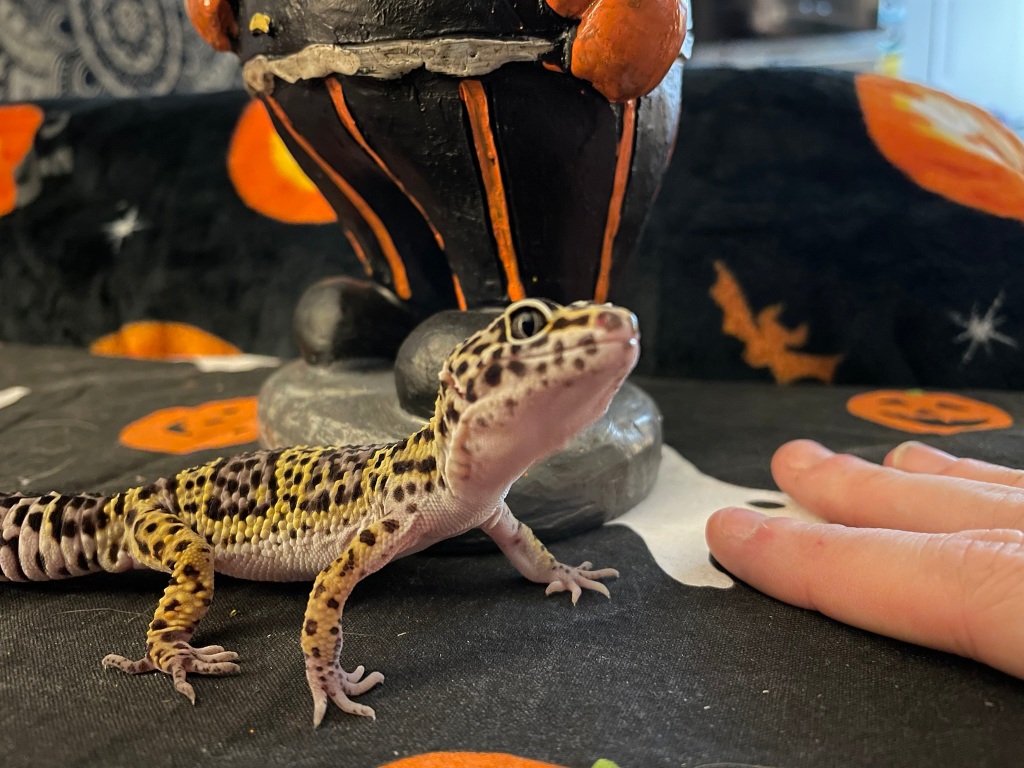
Old husbandry used a red lightbulb to provide “nighttime heat.” This has since been debunked and studies have actually shown that colored lights can cause damage to their eyes. In the wild, the temperature naturally gets a little cooler at night so unless your home is colder than 65F (18C), your gecko will be just fine at night without heat. If it’s cooler than that in your home or it’s winter, the DHP (deep heat projector) should be used as it does not emit light.
If you would like to provide higher quality care for your gecko, it’s recommended that you provide a UVB bulb as it provides D3 naturally to your gecko. It mimics what they would have in the wild more appropriately. It also significantly reduces the chance of your gecko developing MBD (which we will get into later). Most pet stores sell UVB bulbs that look like a coil. This is NOT what you want to provide for your gecko. Recent studies have shown that these coil UVB bulbs do not distribute UVB properly and in some cases have actually caused burns. Save your money and emotional stress and get a linear UVB bulb. I personally use the Arcadia Shadedweller UVB kit with both of my leopard geckos and change out the UVB bulb every 6 months. You will need to change out the UVB bulb at least yearly as it will no longer distribute UVB after 12 months. Studies are being done if it actually stops after 6 months so to play it on the safe side, I personally change it every 6 months.
Hiding Spots
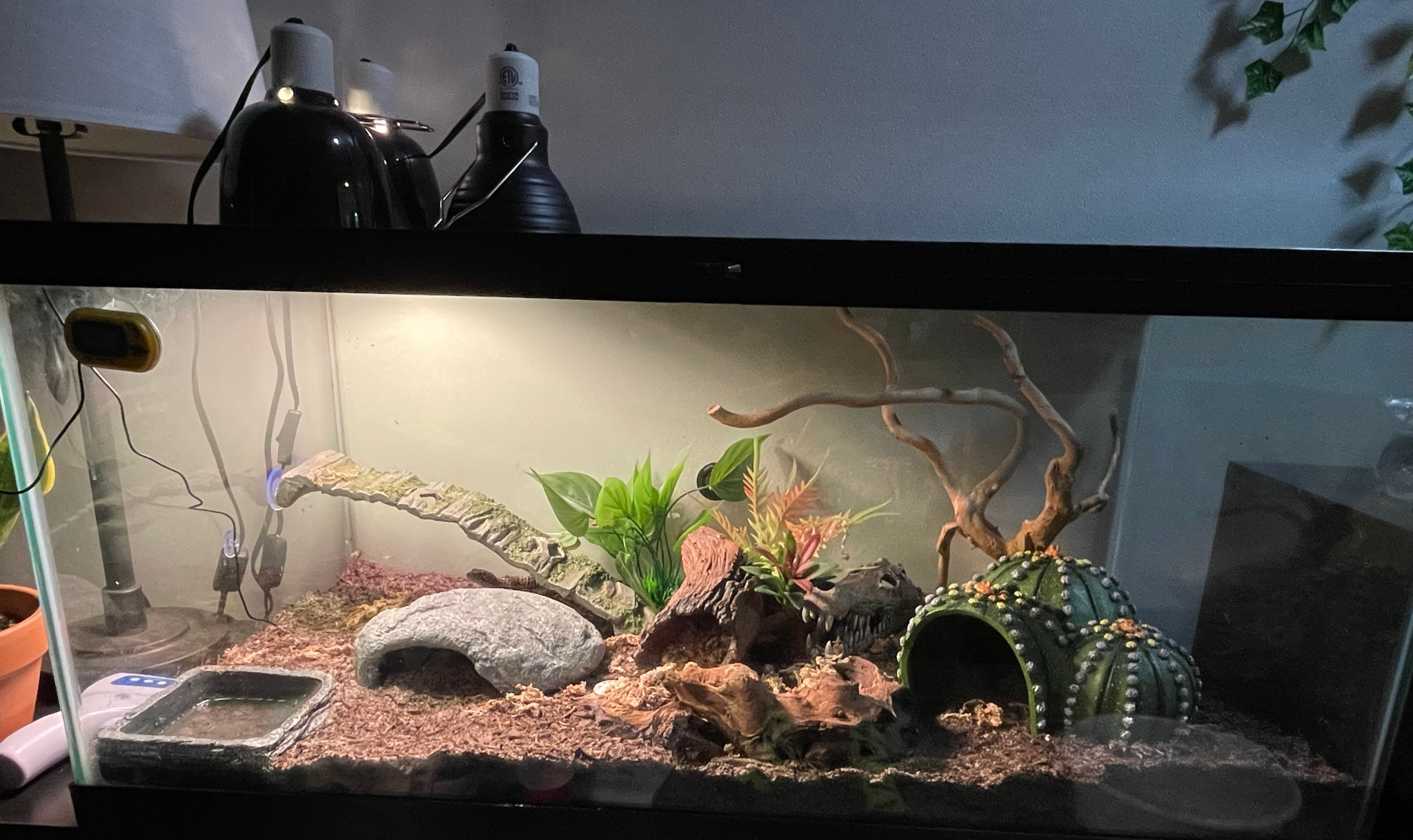
Leopard geckos need 3 hides: a hot hide, a cool hide, and a humid hide. The hot hide is the basking spot I mentioned earlier, which should be a bit warmer than the regular temperature of the hot side of the tank. The cool hide should be on the cool side. The humid hide should be in the middle of the tank, filled with sphagnum moss that gets misted with dechlorinated water once every day or two. The humid hide will be a natural aid to your leopard gecko when it’s time to shed. My personal favorite humid hide is the Zilla Lair, I swear my boy never leaves it. Having all 3 hides is of the utmost importance to ensure your gecko is healthy and happy. This is a big reason why 20-gallon enclosures aren’t recommended, as there isn’t much space to fit all of these hides and control the heat gradient as easily.
Substrate
Most pet stores will try to sell you reptile carpet. It looks easy to clean and it’s soft and colorful, right? Avoid it at all costs. Reptile carpet harbors a lot of bad bacteria no matter how much you clean it and leopard geckos can get their nails/ teeth stuck on it. For geckos under a year, it’s recommended to either use paper towels, textured tile, or non-adhesive shelf liner (adhesive shelf liner will release toxic fumes under the heat of the lamps/ heat of UTHs). For adults, you can continue to use those or opt for a more natural-looking substrate. I use a 70/30 mix of organic topsoil and play sand. You can also use Reptisoil instead of topsoil. The good thing about using Reptisoil instead is that there are fewer wood chips. The downside is it is so much more expensive. Substrate to stay far away from includes sand mats, spongy shelf liner with holes, coconut fiber, eco earth, bark bedding, calcium sand, aspen bedding, reptisand, and cypress mulch.
Food
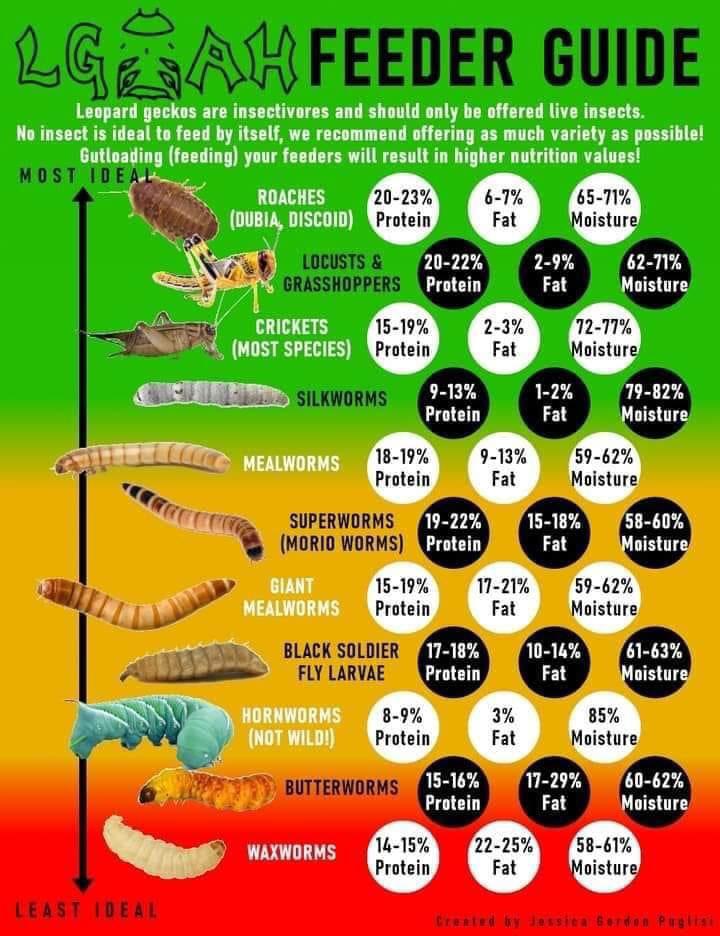
I hope bugs and worms don’t scare you because leopard geckos are insectivores! They only eat bugs, unlike bearded dragons that eat vegetables as well as bugs or crested geckos that primarily eat a fruit and bug paste. Reptiles all have their own “staple” feeder insects, meaning bugs that should be fed most, and “treat” bugs, which should be fed rarely. For leopard geckos, their staples include dubia roaches, silkworms, mealworms, crickets, and black soldier fly larvae. These feeders are high in protein and water and low in fat. Superworms should only be fed 10-15 times per month, as they are low in protein and high in water and fat. Treat feeders that should only be fed once or twice a month include hornworms, wax worms, butterworms, and giant mealworms. These feeders are very high in fat. Please note that, while you may have crickets just hanging out in your backyard, you should only use commercially sold reptile feeder insects. Wild bugs can have illnesses or parasites that can be passed onto your gecko.
Leopard geckos (and most reptiles) are not like us where they need 3 meals a day. The amount of food that they need depends on their age. If you get your gecko from a pet store, they will most likely not know the age of the gecko. If you get your gecko from a reptile expo such as Repticon, they normally have the hatch date for the gecko. Either way, baby geckos (0-6 months) should be fed once daily and only feed them as much as they’ll eat in 10 minutes. Juvenile geckos (6-12 months) should be fed every other day. Adult geckos should be fed only once or twice a week.
Before feeding your gecko, you need to feed your bugs. Strange, right? This is called gut loading your feeders. If you feed your bugs well, your gecko will benefit. Feeder bugs do well with eating your normal human food scraps such as potatoes, carrots, sweet potatoes, leafy greens, apple slices, etc. Feeder bugs can also be too big for your gecko to eat. Geckos can choke if the feeder is too big. The best way to tell if a feeder is small enough for your gecko is if the bug is no wider than the space between your gecko’s eyes. The length doesn’t matter.
Vitamins
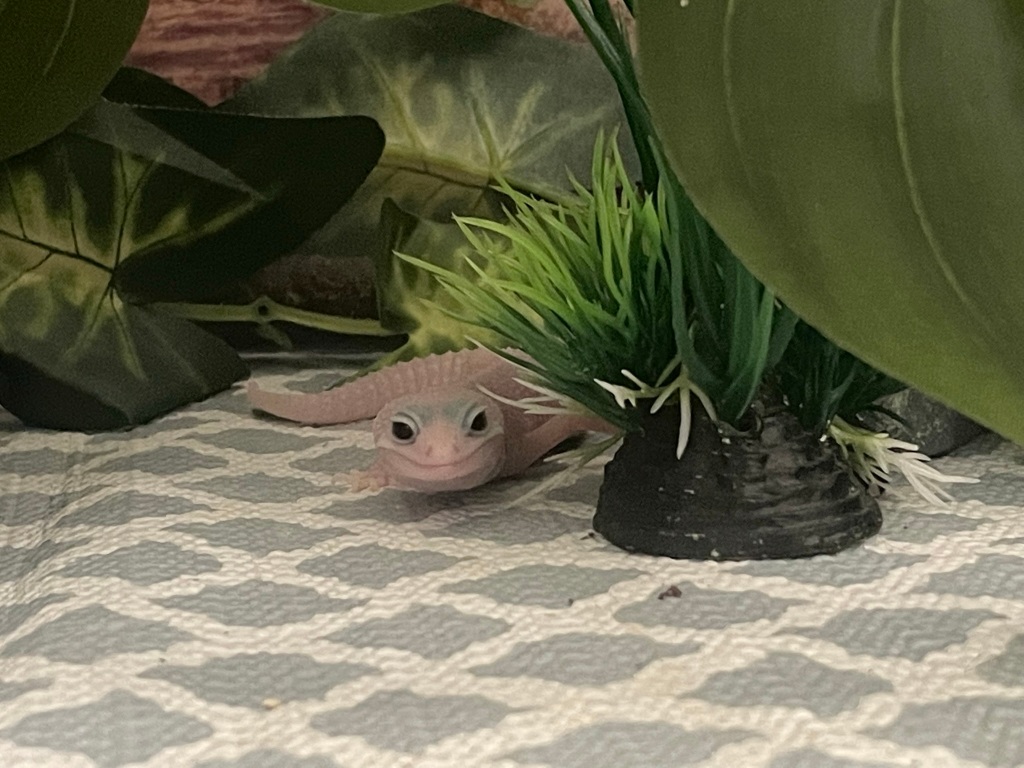
You read that right, leopard geckos need supplements! You’ll need calcium powder and vitamin powder. If you went with providing your leopard gecko with UVB, you’ll want powder without D3. If you elected to not provide your gecko with UVB, you’ll want powder with D3 and one without D3. The reason is that there should be a little cap of calcium without D3 in the enclosure at all times for your gecko to eat when it needs to. I personally use an old soda cap bottle that’s been washed out. Geckos can overdose on D3, which is why it’s important to have non-D3 powder. The calcium in the enclosure should be replaced weekly.
Your feeder bugs should also be dusted in addition to the cap in the enclosure. For those with a UVB bulb, you’ll be dusting your bugs with calcium powder without D3 and then with the reptile vitamin (without D3) powder every 4th feeding. For those without UVB, you’ll be dusting your bugs with calcium powder with D3 and vitamin powder (with D3) every 4th feeding. The best reptile vitamin powder is Zoo Med’s Reptivite (D3 version and without D3 version). Flukers or Repti Calcium are great sources for your calcium powder (D3 version and without D3 version).
Other Items to Get

Leopard geckos are crepuscular, meaning they’re most active at dawn and dusk. They spend most of their days and nights hiding out and napping. They’re also prey animals, meaning they really enjoy being hidden. To ensure they feel safe, lots of clutter in their enclosure is recommended. Fake leaves, branches, wood, cork, etc. It’s not recommended to use leaves and wood you find in your backyard as you don’t know what could be hiding it. Geckos have gotten sick from having unsanitized items put in their enclosure. You are welcome to bake wood and leaves you find from outside but I’ve found it safer to just purchase everything already sanitized, even if it is more expensive.
Geckos also drink water, like anything else. They need a water bowl. Remember to not fill it too high as they aren’t great swimmers. Placing the water bowl on the cool side of your tank will keep it from evaporating as quickly as it would on the hot side. They also need dechlorinated tap water or distilled water. Similar to fish, chlorine in tap water can harm them.
When you bring your gecko home, remember that it’s afraid. It’s just made a big transition and it’s in a new space. Leave your gecko alone for at minimum 3 days, ideally a week. This should be applied to nearly every animal you bring home. When your gecko has settled, you can begin taming it. For roughly 10 minutes a day, put your hand in the tank palm up. Be sure not to make any sudden movements or noise during this time, as it can scare your gecko. The best time of day to do this would be dusk when they’re more active. Your gecko will eventually make movements toward you, such as popping out of its hide to investigate you or even walking over to sniff you. Be patient, you have to go at their pace. Eventually, your gecko will allow you to pick it up. Remember, they are prey animals,. They are not particularly fond of being handled often.
Cohabitation
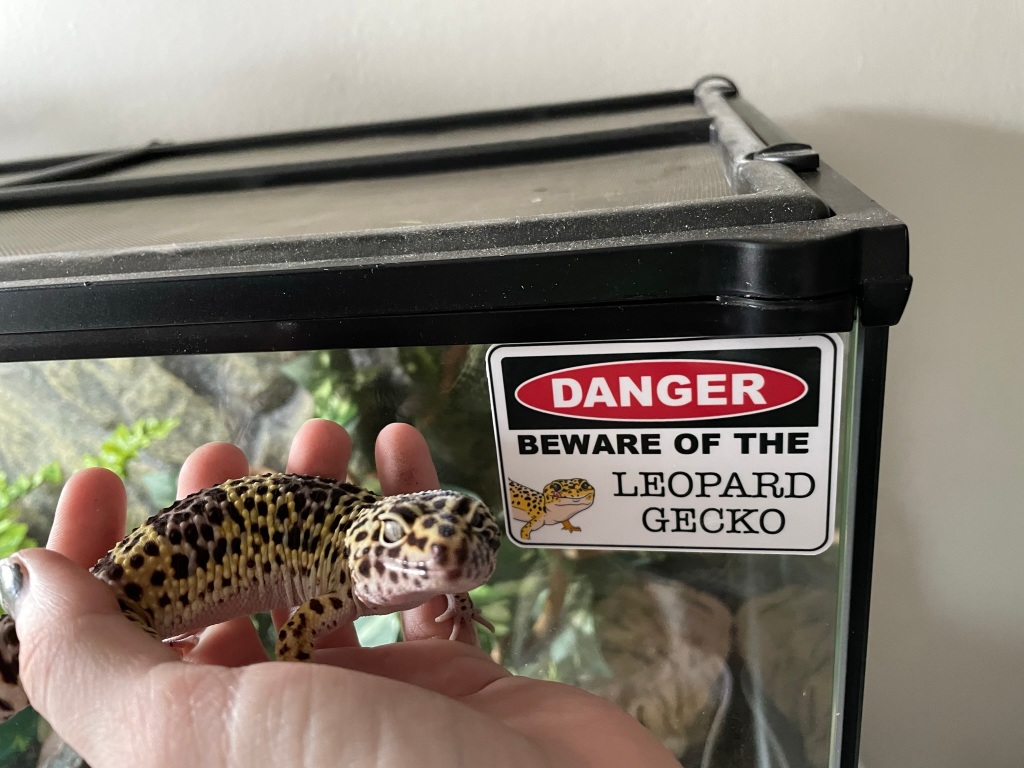
I get this question a lot at work. “Can I keep two geckos together? One boy and one girl? Or two girls?” The answer is very simple: NO. Please understand that reptiles are not social animals. They do not get lonely, they do not crave attention, they do not crave companionship. When you visit your local pet store and you see the reptiles “cuddling”, that’s actually not what’s happening. They’re fighting for resources. One is taking the other one’s heat, food, etc. The same will happen to two or more geckos in an enclosure at home at best. At worst, it can result in fighting, tearing off skin, limbs, toes, and even tails. Cohabbing benefits no one but the keeper and, at the risk of being blunt, is the most selfish thing any reptile keeper can do. Obviously, there are exceptions for breeding purposes but if this is your first reptile, you do not need a bunch of baby geckos. Trust me, I had a regular customer who bred his bearded dragons to make a profit and he couldn’t sell a single one. In the end, he was actually paying people to take them off his hands. Don’t end up like that guy.
Common Issues
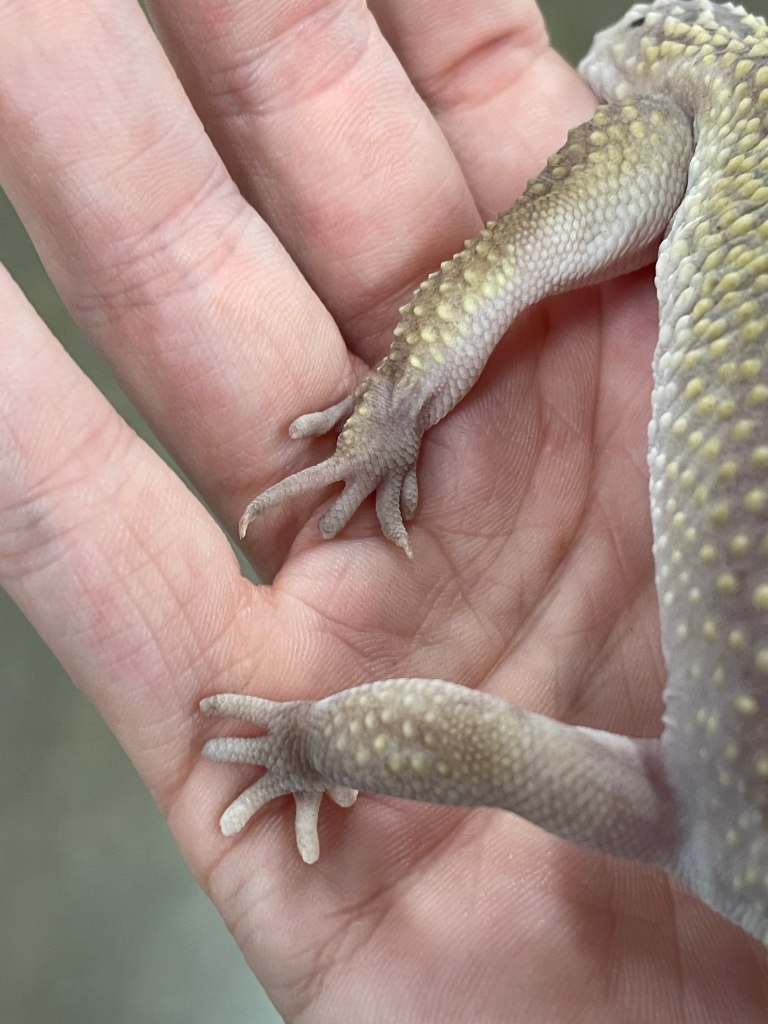
One of the most common issues that happen with leopard geckos is a hunger strike. This is where your gecko refuses to eat for weeks or even months at a time. Sometimes it’s just a simple hunger strike but it could also be a medical issue. If your gecko continues to refuse to eat two or more weeks in a row, the first thing you should check is the husbandry. Check your heat, check their weight on a food scale, and keep changing what feeders you’re offering (except wax worms). If your gecko loses 10% of its body weight, notice the tail thinning, notice lethargy, or anything else unusual, it’s time for a vet visit. ARAV is a great place to find a reptile vet near you.
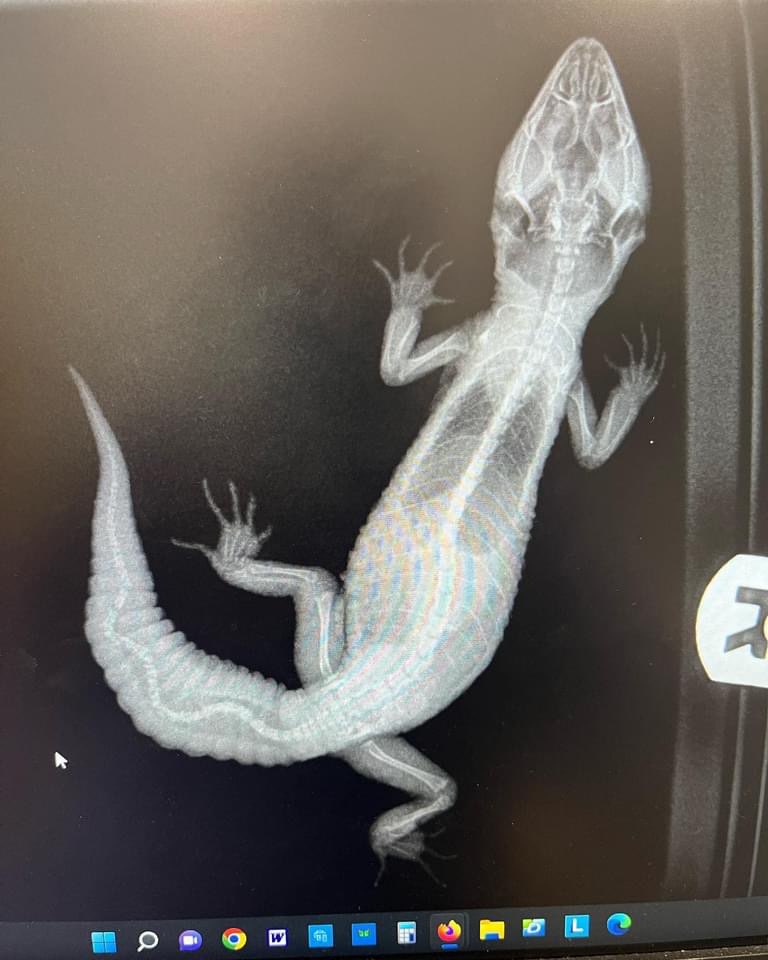
Stuck shed is another common problem with leopard geckos. Your tank humidity should be around 40% at all times, with the humid hide being around 80%. Normally, you will rarely see your gecko shed as they consume the shed skin to get extra vitamins and nutrition. Stuck shed typically looks like your gecko has shed halfway but still has skin left on. If it’s still stuck after 24 hours, you will have to intervene in order to prevent toes from falling off (literally). You will need to find a container with high sides and a lid that your gecko can fit in comfortably. You will need lukewarm water (90F) to soak the bottom of the container and not fill it higher than your gecko’s leg joints. They are not swimmers. Let your leopard gecko soak for about 10 minutes. Finally, use a damp cotton swab to gently rub the shed off. Remember to never rip or pull shed off as it can cause more damage. Don’t be afraid to seek out a vet.
MBD! I told you we were coming back to that. MBD is metabolic bone disease and it is very preventable with proper husbandry. MBD is not something that is curable. It’s permanent damage. A vet can help with controlling pain but the damage is done. MBD happens when a reptile has poor nutrition, kidney disease, or inadequate UVB. MBD signs can include abnormal skeletal development, poor appetite, weight loss, fractured bones, difficulting having a bowel movement, and twitching. It is so easy to prevent with proper care and yet it is so common.
Shopping List
Now that we’ve gotten everything out of the way, let’s condense it down to our shopping list. As much as I would love to include prices, it will range depending on the brand and where you are located. Also, don’t be afraid to check Craigslist/ Facebook Marketplace/ Nextdoor for items you’ll need! I’ve bought many tanks off of Marketplace in great condition for cheap.
- 40-Gallon (or larger) glass or PVC enclosure
- Dimming dome or dome with thermostat. Or UTH (not recommended) with a thermostat
- Halogen or floodlight bulb (unless you use a UTH)
- DHP (deep heat projector) if you live where it’s below 65F or for winter
- Substrate (paper towel, non-adhesive shelf liner, tile, 70/30 topsoil play sand mix)
- Linear UVB (optional but highly recommended)
- 3 hides (hot, cool, humid)
- Lots of clutter (leaves, branches, cork, wood, etc.)
- Calcium (without D3 if you have UVB, 1 with and 1 without D3 if you don’t have UVB)
- Vitamin powder (without D3 if you have UVB, with D3 if you don’t have UVB)
- Sphagnum moss (humid hide)
- Water bowl
- Two thermometers and hygrometers
- Feeders and a small enclosure like a critter keeper if you choose crickets
I hope this condensed version of how to keep a leopard gecko helps anyone interested in the journey! I love talking about leopard geckos so please feel free to drop a comment if you have specific questions on their care or if I should add anything else. Remember that this isn’t the end. The husbandry for leopard geckos and many other animals is being updated regularly so the learning never stops. If you don’t want to continue growing and learning to provide the best care for your pet, you might want to consider not getting one. Leopard geckos live 15-25 years, so they aren’t a short commitment. Do everything you can with your pet’s best interest in mind.


greetings ! great post .
stay awesome and keep blogging
http://www.pomeranianpuppies.uk
LikeLike
Happened upon your post on the WordPress feed and just wanted to send a friendly shout-out! Your content caught my attention, and I’m excited to explore more of your engaging posts. Although I couldn’t locate the follow button (LOL!) , I’ll definitely bookmark your blog ! Rest assured, I’ll stay vigilant for your future posts.
Looking forward to embarking on this reading adventure with you!
Warm regards,
TheDogGod – https://pomeranianpuppies.uk/
LikeLike
hey
cool blog 🙂 will give it a follow and a like !
LikeLike
hey
lovely blog hope all is well
happy blogging.
LikeLike